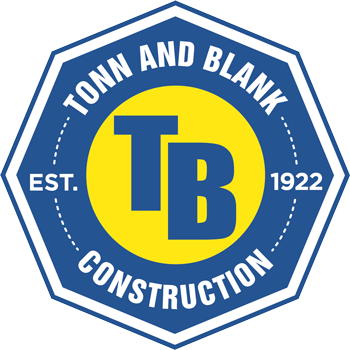In the dynamic world of construction, Building Information Modeling (BIM) is proving a transformative force. The innovative solution is reshaping the architecture, engineering, and construction practices globally. Consequently, it’s revolutionizing the design and construction process, allowing you to turn every project into an effortless masterpiece. Whether building a simple residential house or a mega mall, BIM technology can help you mitigate risks, streamline project management, and optimize project outcomes.
History of BIM
Although only currently making waves, the use of BIM in construction is not a new phenomenon. It traces back to the 1960s when architects and engineers sought to leverage computers to enhance their design and construction process. Although they used computer-aided design (CAD) systems to create building plans, the early systems could only draft and produce technical drawings in 2D.
Early pioneers sought to build a system that could generate 2D drawings and incorporate 3D elements and information about the building materials. Despite their limited functionality, initial CAD systems provide the foundational concepts and tools that helped shape the BIM evolution.
BIM pioneers began experimenting with 3D modeling, which enabled them to create realistic and immersive models. As computers became more powerful in the 1990s, architects realized that you could create comprehensive digital models by embedding information about the building’s properties, materials, components, and relationships.
The 1990s and early 2000s saw the development of dedicated BIM software. Companies such as Revit Systems Corporation and Autodesk provided architects, engineers, and contractors with the ability to create parametric 3D models. It allowed them to embed data, reduce errors, improve coordination, and streamline the design and construction process.
Benefits of Building Information Modeling
The use of BIM in construction is highly beneficial throughout the lifecycle of your projects. From maximizing cost savings and ROI to supporting matchless customization, you’re spoiled for choice.
- Cost Savings: Using BIM models for clash detection analysis accelerates your ability to identify potential clashes between various utilities, such as electrical, medical gas, plumbing, fire protection, pneumatic tube, and structural systems. Detecting potential clashes before construction begins eliminates costly design changes and field modifications that could lead to expensive delays. By eliminating redundancy, BIM minimizes material waste and overtime to help you deliver each project on time and within budget.
- Maximizing ROI: By streamlining the construction process and facilitating functional and aesthetic changes, BIM delivers an exceptional ROI. The BIM ROI from 10 different projects ranged from 140% to an astronomical 39,900%. You’re guaranteed a high ROI even when you apply BIM after the planning or value analysis phases.
- Superior Customization: Using BIM early in the design phase allows you to determine the best skin options, window styles, and building orientation. You can conveniently use the model to conduct daylight studies and determine the sun’s effects on buildings annually. Incorporating such design adjustments during the design phase eliminates costly and time-consuming redesigns that could derail project delivery.
- Streamline Project Delivery: In conjunction with VDC, BIM can help you fast-track the delivery of a mega project, eliminating the usual bottlenecks seen in the construction sector. You may use it for project planning and coordination and quickly identify discrepancies in your contract documents. Model extractions can help you make real-time design changes to resolve conflicts when working on a mixed-use property. It allows for seamless coordination and communication with subcontractors and ensures every construction is up to specs.
- Informed Decision-Making: BIM eliminates the dilemma of choosing construction materials and finishing options. The BIM viewer software allows you to visually compare two or more options and pick the model that matches your needs. You can easily compare their appearance and construction costs. You may also create 3D interior elevations based on the project’s plan to clarify interior details.
Why BIM Became the Standard in the Construction Industry
BIM has become the standard in the construction industry because it helps architects, engineers, and contractors overcome challenges that have long dogged the sector.
- Industry Recognition and Visionary Leadership: Early adopters became advocates after recognizing BIM’s unique abilities to address longstanding problems. They began advocating for its ability to overcome poor communication, streamline fragmented data, and prevent cost overruns, promoting adoption among their peers.
- Government Mandates and Initiatives: Governments worldwide sought to tap into BIM’s transformative power and improve efficiency, reduce waste, and enhance sustainability in construction projects. As such, they implemented BIM mandates and requirements for public infrastructure projects, creating strong incentives for the AEC industry to adopt BIM.
- Technological Advancements: The emergence of powerful and affordable computer hardware allowed software engineers to create powerful BIM tools. The sophisticated systems can easily handle complex 3D modeling, data integration, and analysis, allowing AECs to implement and leverage the technology effectively.
- Matchless Collaboration: BIM provides a shared digital environment facilitating flawless cooperation and information exchange. That allows all stakeholders—architects, contractors, engineers, and other professionals—to work together and optimize results. It helps reduce errors and conflicts that may result in costly delays that pad project costs.
- Interoperability: Developing open standards, especially Industry Foundation Classes (IFC) and Construction Operations Building Information Exchange (COBie), helped establish BIM as the ultimate AEC collaboration tool. Users can easily exchange data and information like 3D geometry, relationships, and object property without loss or alteration.
Riding the coattails of evolving technology, BIM has become the standard in the construction sector. BIM provides incredible benefits with its power to facilitate collaboration, integrate data, and deliver substantial time and cost savings. As technology evolves, new opportunities and possibilities will arise, transforming the construction industry.
